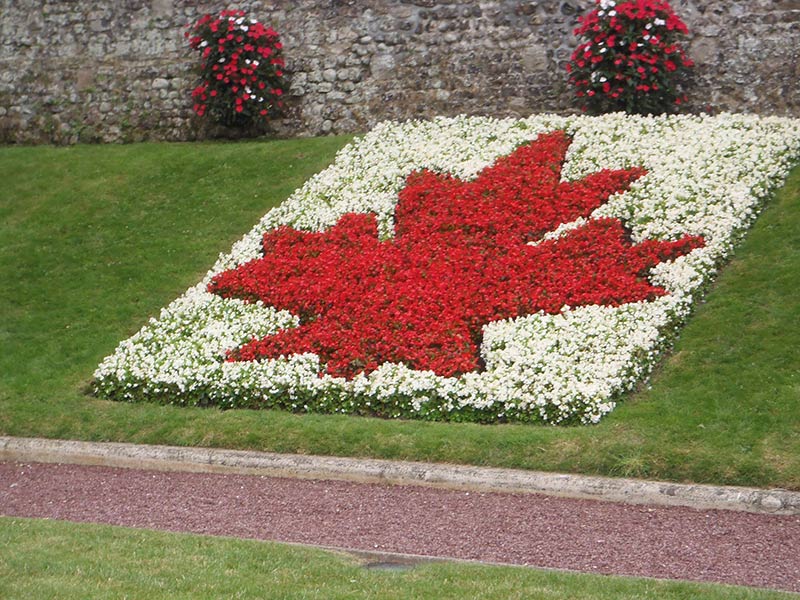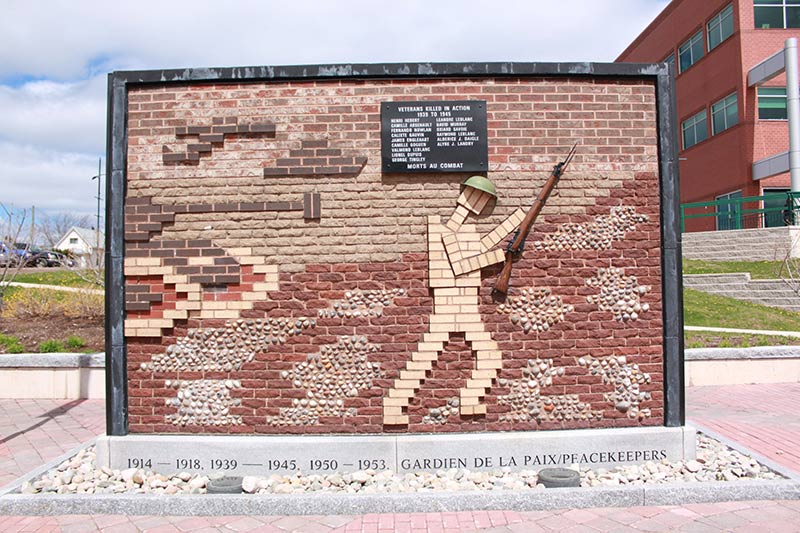Building Ties Across the Atlantic - Handout
This publication is available upon request in alternate formats. PDF Version

There is no doubt that the Dieppe Raid was one of the darkest chapters in Canada’s military history. When Canadian troops landed on the beaches of Dieppe in occupied France on the morning of August 19, 1942, they could not have imagined the horrors that awaited them. The Germans were well prepared and ready to meet the Canadians with heavy machine gun fire and artillery. In mere hours, more than 900 Canadian lives were lost. The brave men who survived would be haunted by the memories of that fateful day, and the battle would be forever etched in the Canadian memory.
How do people heal after such a tragedy? How does a nation recover? How can we honour those who gave their lives and make sure their sacrifice is never forgotten?
In the aftermath of disaster, people will often come together to help one another and to rebuild their shattered lives. In many ways, strengthening relationships is an important part of the healing process. Remembering the goodness in humanity and focusing on what brings us together rather than what divides us is, in itself, an important tribute to the fallen.
Since ancient times, people have built monuments to those who died; dedicating special places to remember those who have made the ultimate sacrifice. Commemorative structures often have an artistic component such as a sculpture or a symbol that highlights human ideals and gives a sense of hope for a better future. These monuments are often located at a gathering place where people can come together to remember and to support one another. They are often in public places such as gardens or parks, relying on the beauty of nature to provide a place for reflection on the great sacrifices made for freedom.
After the Second World War, the people of Dieppe, France, dedicated a small park to the powerful bond that ties Canada and France together. They called it Square du Canada (Canada Square). Beautiful red and white gardens, some in the shape of large maple leafs, surround the picturesque square. In the centre is the Dieppe-Canada Monument, which features the names of people and events linking Canada and France. The following is a translation of the inscription on the plaque:
On the 19th of August 1942
on the beaches of Dieppe
our Canadian cousins
marked with their blood
the road to our final liberation
foretelling thus their victorious return
on September 1, 1944.
Across the Atlantic, people here at home were also looking to pay tribute to the fallen and heal from the tragedies of the Second World War. In 1946, the villagers of Léger’s Corner, New Brunswick—many of whom had ancestors that came from the Normandy region of France a few centuries earlier—changed their community’s name to Dieppe to honour the Canadians who died during the ill-fated raid. This gesture furthered the ties between the two communities and helped foster a deeper friendship in the name of peace.
In 1979, the Dieppe Military Veterans’ Association began working on a plan to build a cenotaph to honour the Canadians who served their country in times of war and peacekeeping, with a specific dedication to the losses suffered during the Dieppe Raid.
When the people of Dieppe, France, heard of the project they decided they wanted to help out. Local French children came together and gathered over 900 stones from the beaches of Dieppe, one for every Canadian who had died there in August 1942. They arranged for the stones to be sent to Canada to be incorporated into the monument and wrote in a letter to the Veterans: “For an end to all wars, for friendship among children.” The Dieppe Cenotaph is a mosaic of bricks, carefully put together to show a scene of a soldier from the Dieppe Raid. The special stones are in ten groups in the beach landscape of the mosaic, representing the ten Canadian Army units that fought at Dieppe.
Searching for more ways to forge deeper ties between their communities, the two municipalities of Dieppe signed an official charter of friendship in the year 2000 and became “sister cities.” As a symbol of their bond, they decided to partner in various cultural events such as kite flying festivals that attract hundreds of participants from around the world. In 2016, the theme for the International Dieppe Kite Festival in France paid special tribute to Canada during the week-long program.
In recent years, kite flying has become a popular symbol of hope. The bright colours and near effortless flight of the kites seem to instill a sense of freedom and peace in those who see them.
What symbol of hope will you create as a tribute to the legacy of those who sacrificed so much?
- Date modified:


